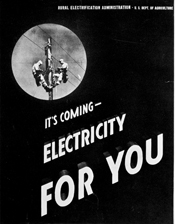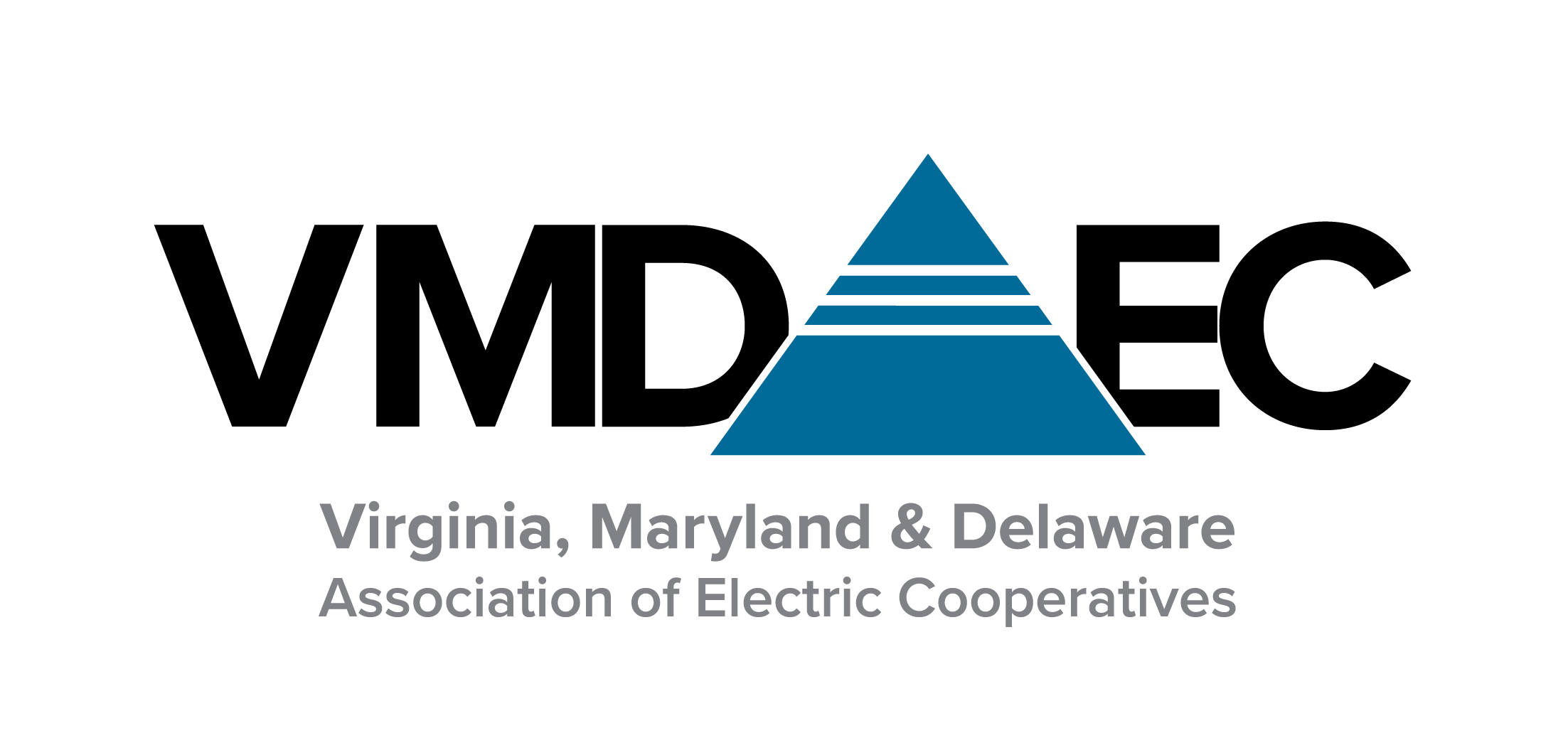Co-op History
The Beginning
As late as the mid-1930s, nine out of 10 rural homes were without electric service. The farmer milked his cows by hand in the dim light of a kerosene lantern. His wife was a slave to the wood range and washboard.
The unavailability of electricity in rural areas kept their economies entirely and exclusively tied to agriculture. Factories and businesses, of course, preferred to locate in cities where electric power was easily acquired.
Even as late as July 1935, a group of utility company executives wrote a report in which they claimed that, in light of their earlier extensive research work, “there are very few farms requiring electricity for major farm operations that are not now served.”
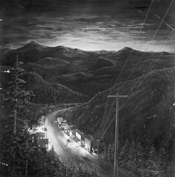
Co-op Lines
This was a statement that was later to haunt the commercial electric industry when the Rural Electrification Administration (REA) and the rural electric cooperatives proved how mistaken this concept was. For many years, however, power companies continued to ignore the rural areas of the nation, except where there were conditions necessary to assure early profits.
The Tennessee Valley Act (TVA)
The first official action of the federal government pointing the way to the present rural electrification program came with the passage of the Tennessee Valley Act (TVA) in May 1933. This Act authorized the TVA Board to construct transmission lines to serve “farms and small villages that are not otherwise supplied with electricity at reasonable rates.”
The idea of providing federal assistance to accomplish rural electrification gained ground rapidly when President Roosevelt took office in 1933 and began his New Deal programs. On May 11, 1935, Roosevelt signed Executive Order No. 7037 establishing the REA. It was not until a year later that the Rural Electrification Act was passed, and the lending program that became the REA got underway.
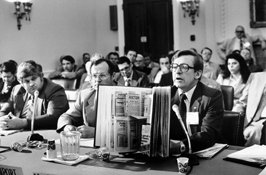
Congress
Within four years following the close of the war, the number of rural electric systems in operation doubled, the number of consumers connected more than tripled, and the miles of energized line grew more than five fold. By 1953, more than 90 percent of U.S. farms had electricity.
Rural Utilities Service
Today about 99 percent of the nation’s farms have electric service. Most rural electrification is the product of locally owned rural electric cooperatives that got their start by borrowing funds from REA to build lines and provide service on a nonprofit basis. Today the REA is the Rural Utilities Service and is part of the U.S. Department of Agriculture.
After almost 60 years, REA was abolished by a massive reorganization of the Department of Agriculture in 1994. Its responsibilities were transferred to a new agency, the Rural Utilities Service (RUS). The electric loan program continues to operate much as it did under REA.
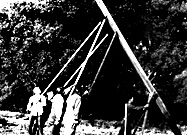
Lineman Setting Poles
Power Marketing Agencies
An important part of the history of electric cooperatives has been the development of power marketing agencies (PMAs).
In 1937, the federal government established the first PMA, the Bonneville Power Administration. The government then went on to form four more PMAs to market the power generated at 133 federal dams across the country. Today there are three PMAs in addition to Bonneville: Southeastern Power Administration; Southwestern Power Administration; and Western Area Power Administration.
The federal law that governs PMAs gives preference in the sale of power at-cost to public bodies and electric cooperatives. The availability of low-cost power to electric cooperatives has promoted economic development and has offset the cost of serving sparsely populated areas.
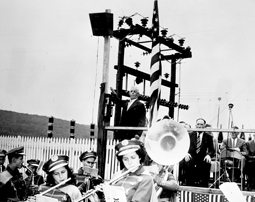
REA Energized
